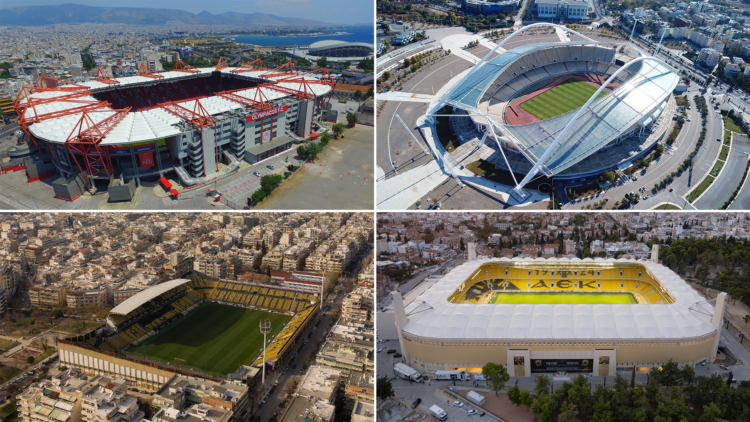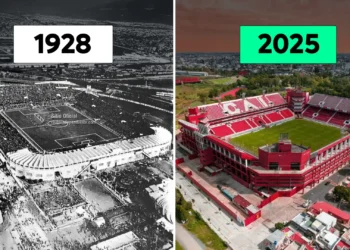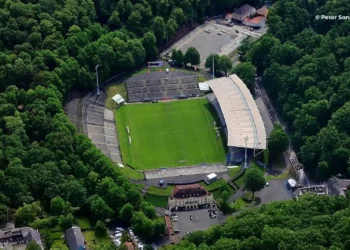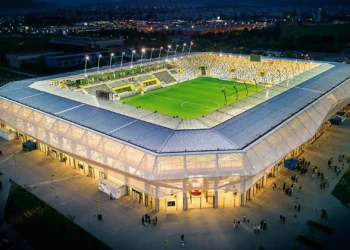Greece boasts a rich footballing culture, its stadiums stand as witnesses to the passionate support that the sport garners. From historic venues in Athens to bustling arenas in Thessaloniki, here is a list of the ten biggest stadiums in Greece, ranked by their seating capacities.
10. AEL FC Arena, Larissa
Capacity: 16,118
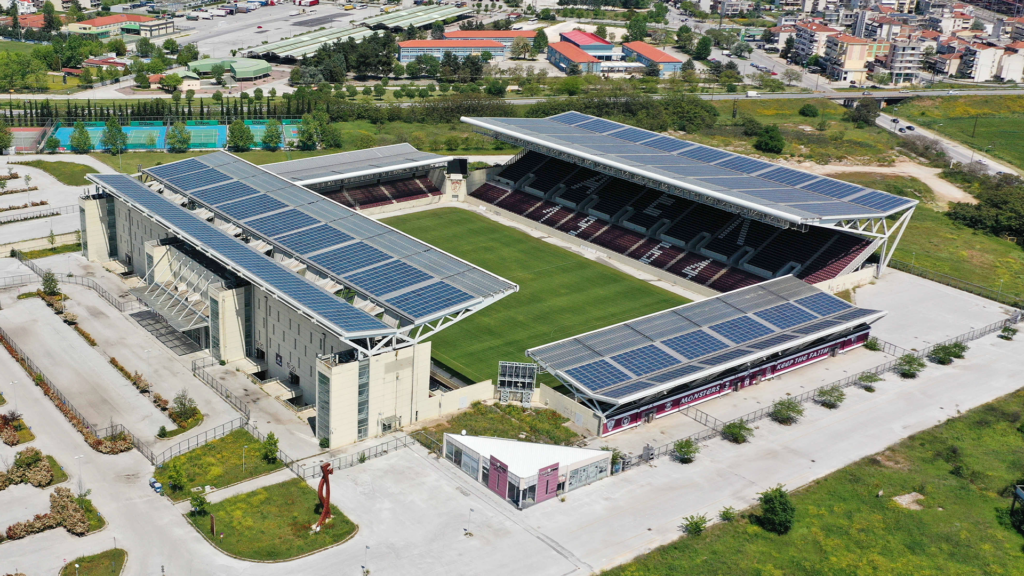
AEL FC Arena, a football stadium in Larissa, Greece, with a current seating capacity of 16,118. It has served as AEL’s home field since its completion in 2010 and for the past eight seasons. Gipedo Larissa A.E. owns the ground. The sports facility is advantageously positioned in terms of urban location, with easy access to the transportation system, decent access from two major highways, and close proximity to the city center.
9. Panthessaliko Stadium, Volos
Capacity: 22,140
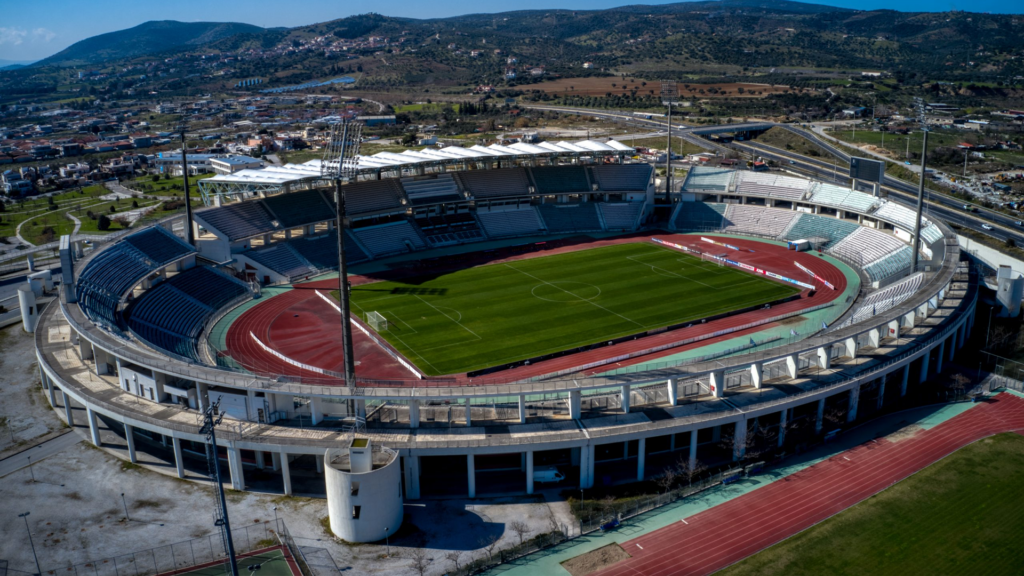
Located in Volos, Panthessaliko Stadium serves as the home ground for Volos N.F.C. With a substantial capacity, it acts as a hub for football enthusiasts in the region.
8. Kleanthis Vikelidis Stadium, Thessaloniki
Cacity: 23 220
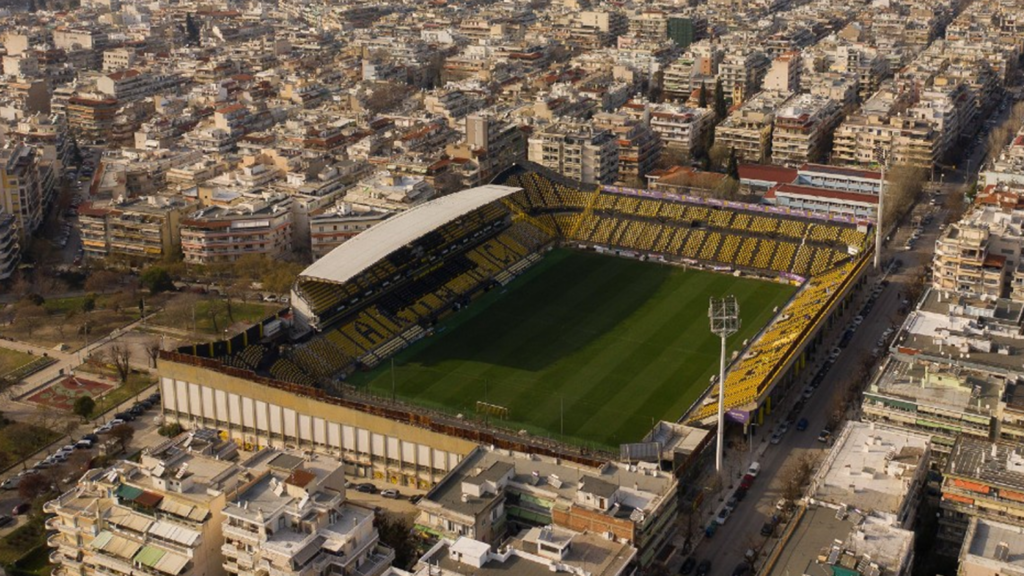
It was completed in 1951 as the home stadium for Aris F.C. , one of Greece’s most popular football clubs. For many years, the ground’s original name was Aris Stadium, but it was changed in honor of Kleanthis Vikelidis, a renowned Aris FC player in the 1930s.
7. Pampeloponnisiako Stadium, Patra
Capacity: 23 588
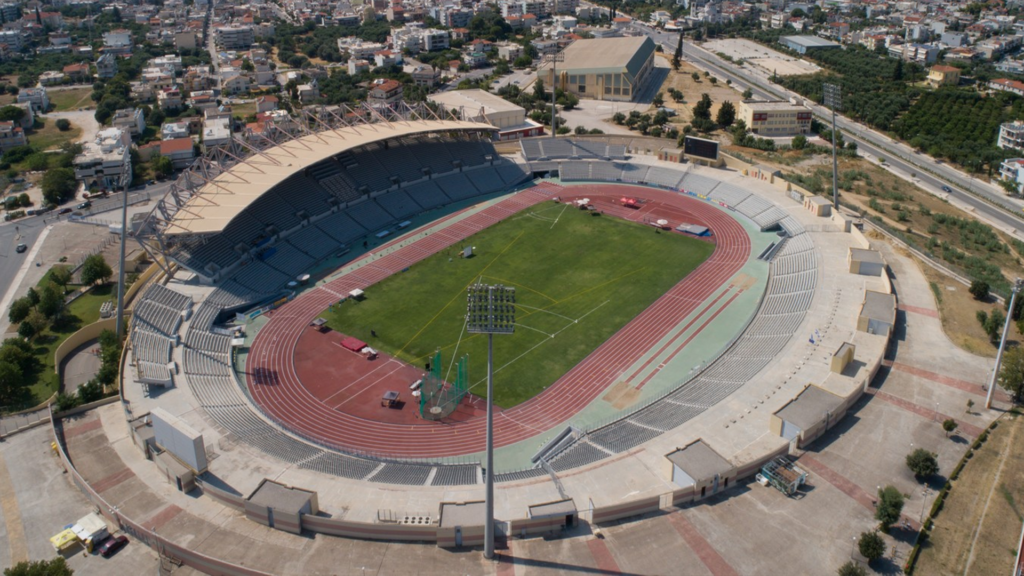
Reconstruction work began in 2002, and it reopened on August 8, 2004, just in time to host football competitions at the 2004 Summer Olympics. The stadium has a capacity of 23,588, and it is used by the Municipality of Patras.
6. Pankritio Stadium, Heraklion
Capacity: 25,780
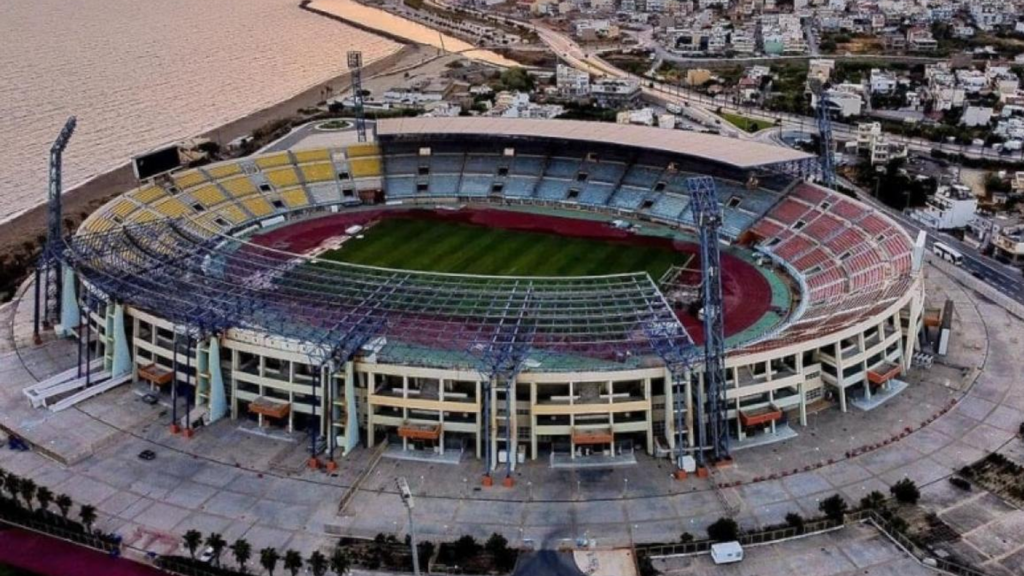
As one of Greece’s most advanced sports arenas of it’s time, it served as one of the football sites for the 2004 Summer Olympics. It has a capacity of 26,240 seats and is now home to Ergotelis, a local association football club, and on occasion, the Greece national football team.
5. Kaftanzoglio Stadium, Thessaloniki
Capacity: 27,770
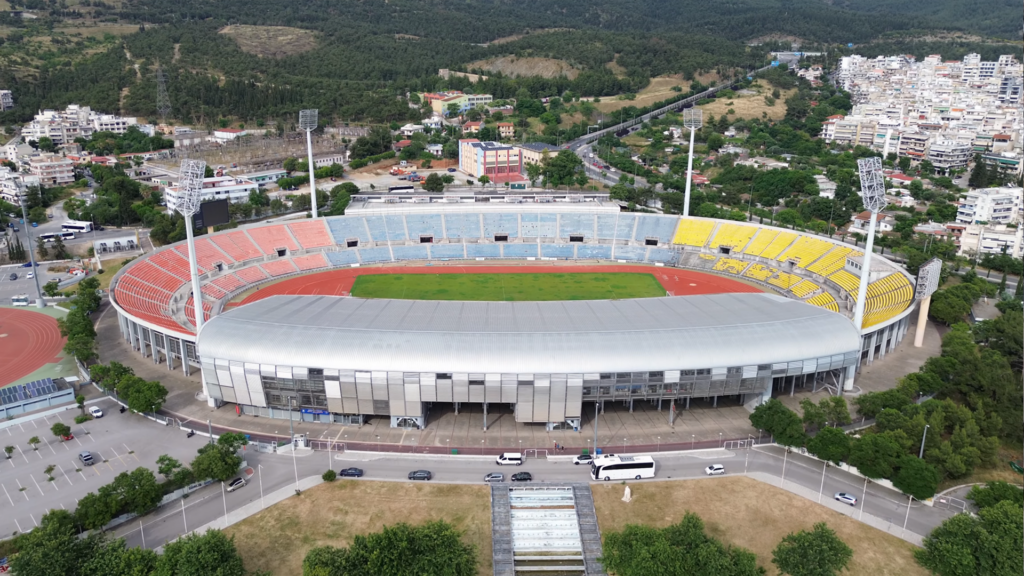
The stadium has been operating as the home stadium for Iraklis Thessaloniki F.C. since 1960. It consists of 27,770 seats, thanks to the conversion of terraces to seats in 2000 and a thorough makeover before reopening to host football matches for the 2004 Summer Olympics, which were held in Athens. It was Greece’s largest stadium until 1982, but it’s seating capacity was eventually exceeded by Athens’ Olympic Stadium.
4. Toumba Stadium, Thessaloniki
Capacity: 28,703
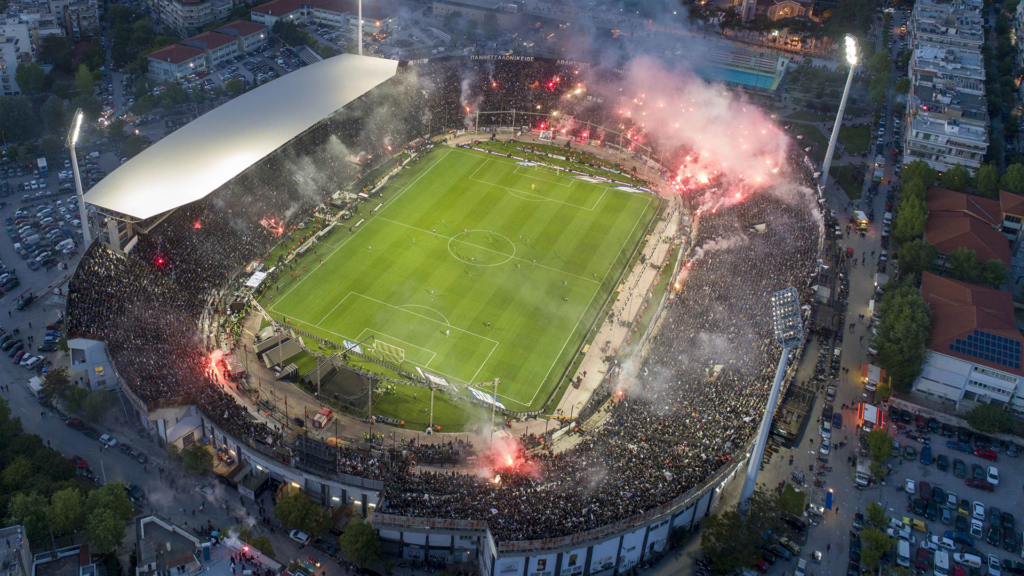
The pride of Thessaloniki, Toumba Stadium is the home ground of PAOK. Its electrifying atmosphere, fueled by passionate fans, makes it a daunting venue for any visiting team.
3. OPAP Arena Stadium, Athens
Capacity: 32,500
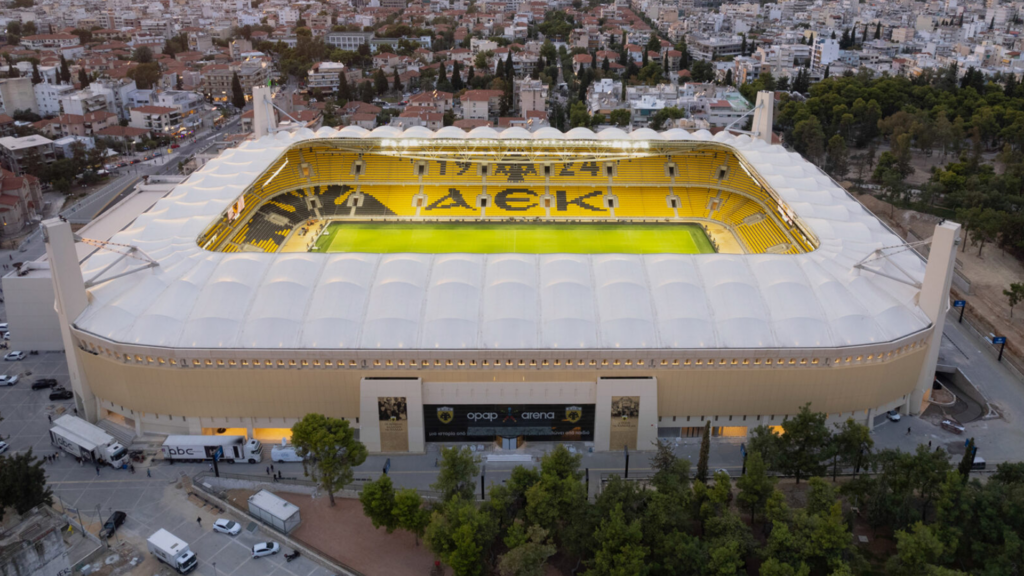
With a total seating capacity of 32,500, it is Greece’s second largest football stadium. It is located in Nea Filadelfeia, a northwest suburb of Athens, Greece. The new arena was constructed on the former Nikos Goumas Stadium facilities. The arena was finished in October 2022. Opap Arena Stadium is Greece’s newest stadium.
2. Karaiskakis Stadium, Piraeus
Capacity: 33,334
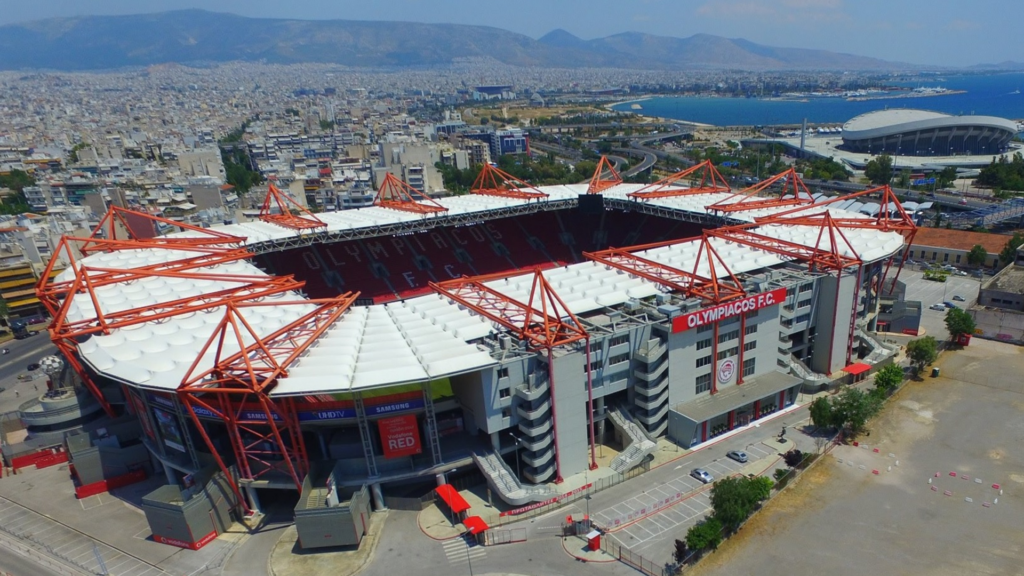
Placed in the heart of Piraeus, Karaiskakis Stadium is the fortress of Olympiacos. With a vibrant atmosphere and a rich history, it remains a symbol of the undying passion for football in Greece.
1. Olympic Stadium “Spyros Louis”, Athens
Capacity: 69,618
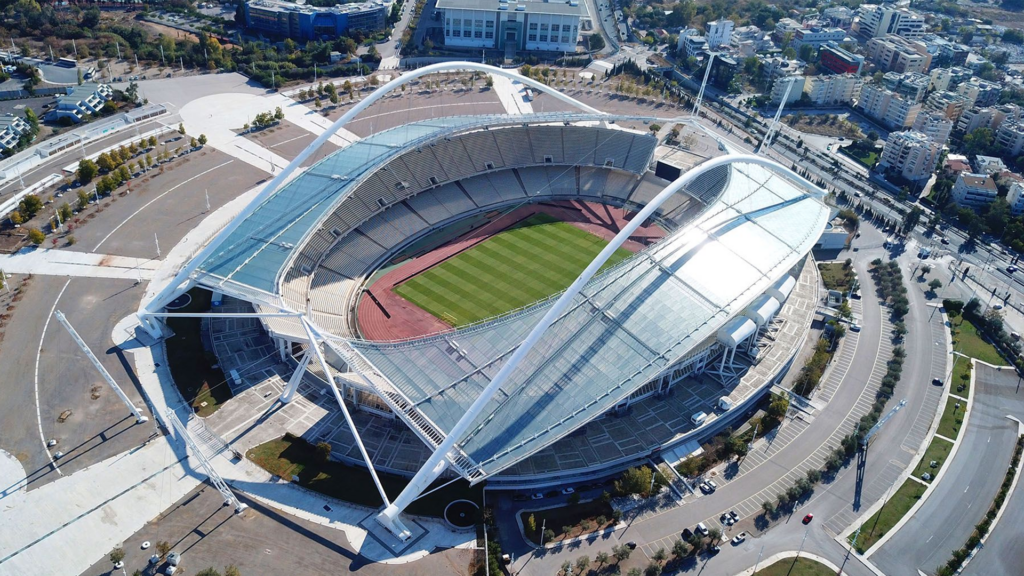
Although temporarily closed, it will be difficult to dismantle the colossus that is the Olympic Stadium, named after the first modern winner of the Olympic marathon, Spyros Louis, as it is the jewel in Greece’s sporting crown. It serves as a testament to the grandeur of Greek football, and it has played host to countless memorable events over the years.
In Greek football, stadium atmospheres play an important role. Athens may host fierce derbies, but Thessaloniki’s stadiums ignite the passion of fans; they are more than just structures; they embody the spirit of football in the nation. With Greek football continuing to develop, these arenas will undoubtedly become increasingly important.

